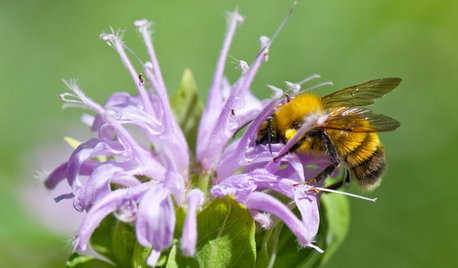Alfalfa Meal vs. Soybean Meal
raymondo17
16 years ago
Featured Answer
Sort by:Oldest
Comments (43)
rutgers1
16 years agolast modified: 9 years agoRelated Professionals
Norfolk Landscape Architects & Landscape Designers · Barrington Hills Landscape Architects & Landscape Designers · Cary Landscape Architects & Landscape Designers · Lakewood Landscape Architects & Landscape Designers · Alexandria Landscape Contractors · Battle Ground Landscape Contractors · Cary Landscape Contractors · Downey Landscape Contractors · Fort Payne Landscape Contractors · Seven Hills Landscape Contractors · Tewksbury Landscape Contractors · Englewood Swimming Pool Builders · Newman Swimming Pool Builders · South Miami Heights Swimming Pool Builders · West Palm Beach Swimming Pool Builderstexas_weed
16 years agolast modified: 9 years agolutzd79
16 years agolast modified: 9 years agogarycinchicago
16 years agolast modified: 9 years agoraymondo17
16 years agolast modified: 9 years agolou_spicewood_tx
16 years agolast modified: 9 years agotexas_weed
16 years agolast modified: 9 years agoskoot_cat
16 years agolast modified: 9 years agotexas_weed
16 years agolast modified: 9 years agodeerslayer
16 years agolast modified: 9 years agotexas_weed
16 years agolast modified: 9 years agograyentropy
16 years agolast modified: 9 years agoraymondo17
16 years agolast modified: 9 years agolou_spicewood_tx
16 years agolast modified: 9 years agolou_spicewood_tx
16 years agolast modified: 9 years agolou_spicewood_tx
16 years agolast modified: 9 years agograyentropy
16 years agolast modified: 9 years agolou_spicewood_tx
16 years agolast modified: 9 years agolou_spicewood_tx
16 years agolast modified: 9 years agograyentropy
16 years agolast modified: 9 years agograyentropy
16 years agolast modified: 9 years agoraymondo17
16 years agolast modified: 9 years agotexas_weed
16 years agolast modified: 9 years agotexas_weed
16 years agolast modified: 9 years agogarycinchicago
16 years agolast modified: 9 years agolou_spicewood_tx
16 years agolast modified: 9 years agodeerslayer
16 years agolast modified: 9 years agotexas_weed
16 years agolast modified: 9 years agotexas_weed
16 years agolast modified: 9 years agoraymondo17
16 years agolast modified: 9 years agodeerslayer
16 years agolast modified: 9 years agoraymondo17
16 years agolast modified: 9 years agogarycinchicago
16 years agolast modified: 9 years agoraymondo17
16 years agolast modified: 9 years agodeerslayer
16 years agolast modified: 9 years agoraymondo17
16 years agolast modified: 9 years agotexas_weed
16 years agolast modified: 9 years agosoccer_dad
16 years agolast modified: 9 years agotheyardbird
16 years agolast modified: 9 years agoraymondo17
16 years agolast modified: 9 years agobillhill
16 years agolast modified: 9 years agoraymondo17
16 years agolast modified: 9 years ago
Related Stories

GARDENING GUIDESTackle Weeds the Natural Way
Instead of dousing your yard with chemicals to wipe out weeds, let time and nature work their magic via smothering and solarization
Full Story
GARDENING GUIDESPacific Northwest Gardener: What to Do in June
Now's the time to prune pines and vines, prevent pests and buy June-blooming plants to keep your garden healthy and beautiful
Full Story
URBAN GARDENSContainers Make Growing Edibles a Cinch
If life hands you a lack of land, grow lemons — with a few basics, you can proudly reap the fruits, veggies and herbs of your labor
Full Story
FARM YOUR YARDIf You Have Room for Only One Summer Crop ...
Get an edible that’s long on flavor even if you’re short on space, with a long-time gardener’s favorite picks
Full Story
FALL GARDENING7 Reasons Not to Clean Up Your Fall Garden
Before you pluck and rake, consider wildlife, the health of your plants and your own right to relax
Full Story
GREEN BUILDINGThe Big Freeze: Inventors Break New Ground to Keep Things Cool
Old-fashioned fridges can be energy guzzlers, but there are more eco-friendly ways of keeping food fresh, as these global innovations show
Full Story
EDIBLE GARDENSNatural Ways to Get Rid of Weeds in Your Garden
Use these techniques to help prevent the spread of weeds and to learn about your soil
Full Story
GARDENING GUIDESSupport Bumblebees by Providing Forage in 3 Seasons
Bumblebees are fascinating and fun to observe foraging in gardens. Find out how to create a buffet for these fuzzy, charismatic bees
Full Story
GARDENING AND LANDSCAPINGWorld of Design: 10 Home Gardeners Show Us Their Sweet Summer Harvests
From New York to Tokyo, these gardeners have turned their yards, terraces and rooftops into places of bounty
Full Story
GARDENING GUIDESThe Poop Scoop: Enrich Your Soil With Good Old Manure
Get over the ick factor already — this natural super-ingredient for soil has so many benefits, you'll wonder why you ever went chemical
Full StorySponsored
Most Skilled Home Improvement Specialists in Franklin County
More Discussions






billhill